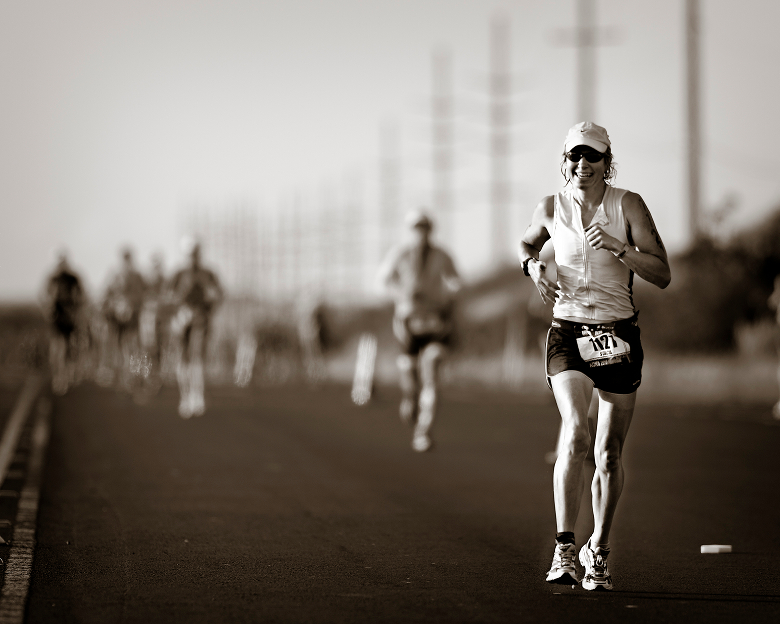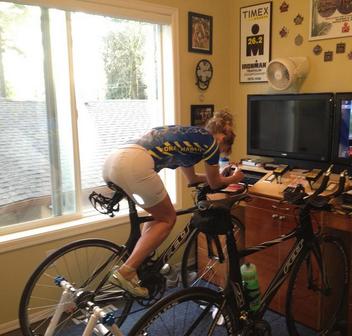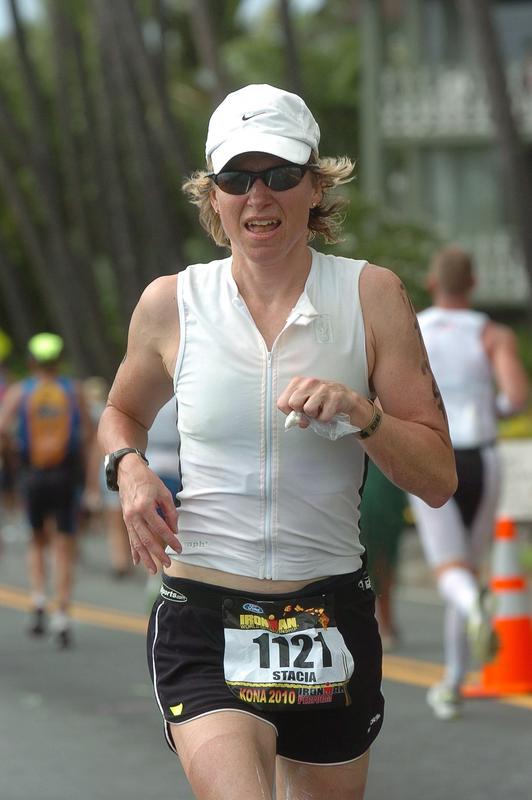 | ||||
 | ||||
Testing
A big part of being realistic (and effective) in training and racing is having a good understanding of ones fitness and performance level.
To best understand the fitness and performance level of my athletes I use objective physiologic testing. Designing a training plan around objective testing leads to better structure and purpose. Guesswork is minimized. Training at the correct intensities leads to physiologic adaptation and improvement which is then measurable through repeat testing and, more importantly, in race performances.
Despite what people may sell you or what you read, there are no magic bullets or ways to get fast “overnight”. Endurance training and racing is a progressive process that takes time to develop. The body has several different “energy systems” and it is important to incorporate these systems appropriately in the training cycle to achieve peak performance. Consistency in training with the appropriate frequency, duration, intensity, and recovery is the key to improvement. Testing helps us monitor and adjust during the process.
There is a lot of “physiologic testing” out there, some more useful than others. As an athlete considering any testing it is important to ask yourself a couple of questions:
“What is the purpose of this test?”
“What does the result tell me?”
“How do the results of this test affect how I train and race?”
These are the questions I consider in using testing as part of my coaching. The following tests are useful at measuring fitness and planning training load.
CYCLING
“Functional Threshold Power”
Power is the best measurement of fitness and performance for cycling. How much power can an athlete generate for a given amount of time? To measure this I use a protocol developed by Andrew Coggan and Hunter Allen that is available in their book Training and Racing with a Power Meter, 2nd Edition. Athletes come to my home and do this test indoors on a calibrated CompuTrainer. This test involves a 20 minute time-trial that provides wattage and heart rate data that can then be used to determine training intensities for cycling. Athletes benefit greatly if they train and race with a power meter (which I highly encourage). However, even if an athlete does not use a power meter this test provides physiologic insight and heart rate information that is useful in training and racing.
RUNNING
“Treadmill Estimated Lactate Threshold”
This is a test performed indoors on the treadmill. This test takes about 10 minutes and is conducted after a 15-20 minute warm-up of very easy running. The test is graduated, that is, speed is increased incrementally with time. Heart rate is recorded during the process and the Borg Rating of Perceived Exertion (RPE) is used to help estimate lactate threshold. In addition to the Borg RPE, I also monitor for the transition to “Ventilatory Threshold”, the moment that the athlete slips into severely labored breathing. Ventilatory threshold is a very good estimate of Lactate Threshold. The heart rate and speed at which you make this transition is useful for guiding run training.
“VDOT” – Running velocity at VO2 maximum.
See Jack Daniels’ book Daniels Running Formula, Chapter 3, for a thorough discussion of VDOT and how it is used to guide training and racing. The following is a brief description.
How fast an athlete can run is dictated by several factors. Maximum oxygen uptake, VO2 max, is a major factor. This is the rate of oxygen uptake at the cellular level (liters/min) and varies from athlete to athlete. “VO2 Max” is not the only determiner of running speed, but it sure helps to have a high one! Running “economy” is also important. Some runners are very economical, they expend less energy than others due to things like more efficient biomechanics and lower body weight. The end result is that a runner with a high VO2 max but poor economy may not perform as well as someone with a lower VO2 max but better economy.
VDOT is a way of looking at functional VO2 max: taking all things into account, how fast does someone perform at their VO2 max? This is a performance-based “test” that allows me to appropriately integrate different running intensities into an athletes program. Training at the right running intensity is arguably even more important for the triathlete than the pure runner since the multi-sport athlete is more susceptible to “overtraining”.
SWIMMING
Swim training is markedly different than both cycling and running. In swimming, technique and “economy” is vitally important. Swimming speed is all about eliminating drag while applying maximum forward propulsion force. As such, things like power and heart rate that we use in cycling and running are not as important.
I encourage all of my athletes to become involved in a Master’s swim program. Swimming with others and with the help of a pool-side coach who not only designs workouts but can provide technique input is very important.
That being said, it does help to have a benchmark performance test in swimming to guide training and measure progress. Because triathlon swimming distances are so much longer than that of pool competition it is not that critical how fast you can swim a 50, 100, or even 200. The benchmark time-trial I use for athletes is 1,000 yards/meters. This distance provides a nice mix of speed and endurance that reflects an athletes ability at all race distances, sprint to Ironman. How fast an athlete swims this time-trial can be used to determine workout pacing and send-off times.
This test is done in the pool but without drafting. It is helpful to swim the time-trial with others to provide competitive stimulus. Preferably the other swimmers are in adjacent lanes and you have an unimpeded path free of other swimmers.
2 Rider CompuTrainer set up for Bike Testing
Click button to check out your VDOT
 | ||||
 | ||||
 | ||||
 | ||||





